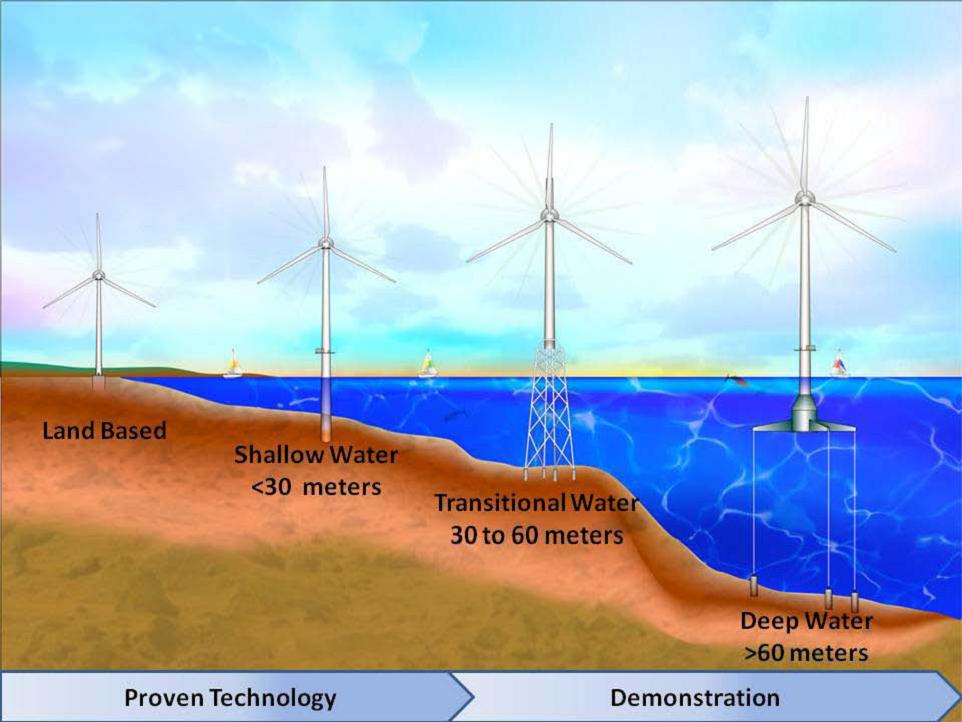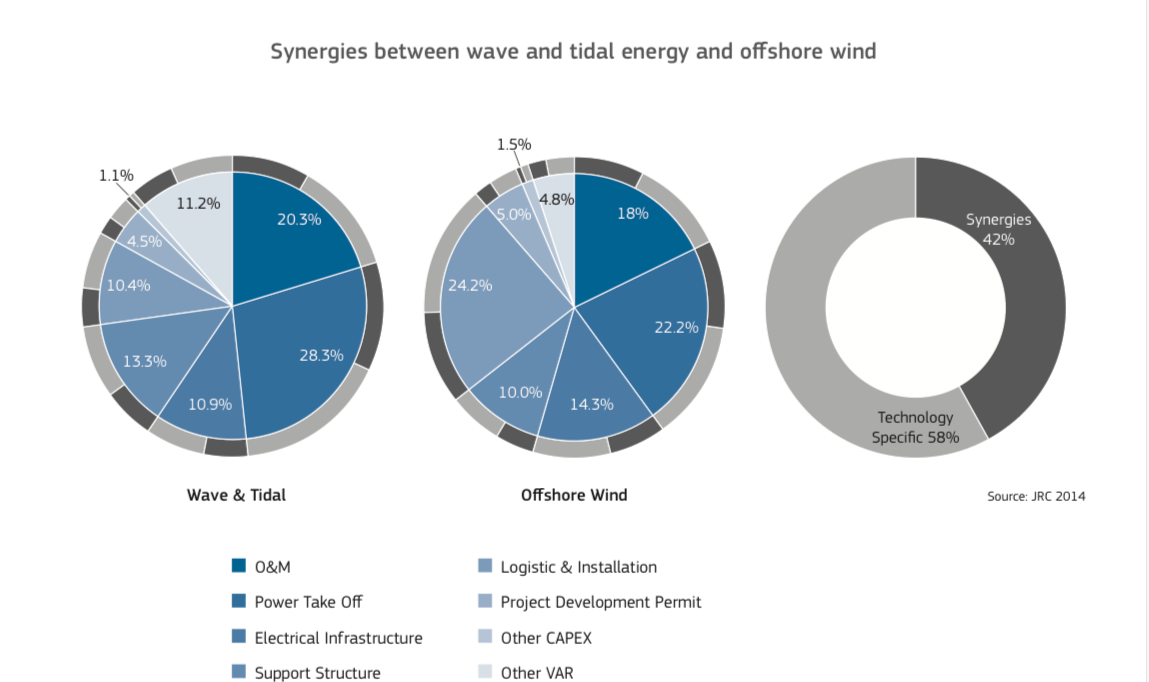Offshore Wind Energy

Wind turbines are already a well-known technology. The idea is simple: the kinetic energy in the wind turns blades around a rotor, creating electricity. But offshore wind is different.
Offshore wind speeds tend to be faster. And faster wind speeds mean exponentially more energy: a turbine in a 20km/h wind generates twice as much energy as the same turbine in a 15km/h wind.
Offshore wind speeds also tend to be steadier. Steadier means more reliable. And while offshore wind levels vary, they are more easily forecast – up to several days in advance.
It’s also relatively easy to transport large components by sea, making it easier to build bigger turbines, and capture more energy. And while the blades can be longer, the towers can be shorter, because open water is free of the vegetation and topography that create wind shear and turbulence over land.
Foundation Technology
The foundations currently used for offshore wind projects include:
- Mono pile: A steel pile driven approx. 10-20m into the seabed.
- Gravity: The most common offshore wind foundation, the gravity foundation is a large concrete or steel base that rest on the seabed and is dependent on gravity to remain erect.
- Tripod: Based on technology for the oil and gas industry, tripod piles are typically driven 10-20m into the seabed, depending on soil conditions. Designed for deeper depths, the tripod has not been used on many projects to date.

Floating offshore wind is also emerging as a future, game-changing technology. In water deeper than 50m, floating turbines offer access to large areas with a strong wind resource. Up to 80% of the world’s offshore wind resource is water deeper than 60m.
For some countries, such as those with a narrow continental shelf, floating foundations offer the only opportunity for large-scale offshore wind deployment. Large potential markets like Japan and the United States possess few shallow-water sites suitable for offshore wind development – floating offshore wind could make enormous renewable uptake possible.
Offshore wind is still a young technology. But in time, even in mid-depth conditions (30-50m), floating platforms may offer a lower-cost alternative to fixed-bottom foundations, given the potential for standardization of foundation designs and the use of low-cost, readily available installation vessels.
Offshore Wind Market
Canada has excellent offshore wind energy resources. Combining the longest coastlines in the world with a resource that is stronger and more predictable than onshore wind means Canada has a major opportunity to grow the domestic sector by using offshore wind for the production of green fuels like hydrogen and for clean electricity to the grid.
There are also growing opportunities for Canadian companies to export their skills internationally. Globally, there are over 80 offshore wind projects operating in fifteen countries in Europe, Asia, and more recently, the United States. As of 2016, over 14,000 MW of offshore wind had been installed, with Bloomberg forecasting that capacity will increase to 47,000 MW by 2020, resulting in $27 billion invested annually.
Canadian companies involved in offshore wind internationally include:
- Northland Power Inc. owns 100% of the 252 MW DeBu offshore wind project and 60% ownership of a 600 MW Dutch project totaling $4.2 billion.
- Enbridge invested $750 million in 2015 to take 25% ownership of a $3 billion, 400 MW UK project.
- Canadian financial institutions, such as CIBC, BMO, and National.
As of 2016, the world’s largest offshore wind markets included the UK (approx. 36% of installed capacity); Germany (29%); China (11%); Denmark (8.8%); the Netherlands (7.8%); Belgium (5%); and Sweden (1.4%). Other markets including Finland, Ireland, Spain, Japan, South Korea, the USA and Norway make up the balance.
Marine Renewable Synergy
While still new, offshore wind is clearly the most mature marine renewable energy technology. It can play a synergistic role in supporting the growth of tidal and wave: collectively, these projects operate in harsh environments, have similar supply chain and regulatory issues, and share a common approach to overall project development. In fact, a study by the European Union’s Joint Research Council (JRC) identified that about 42% of wave, tidal, and offshore wind energy projects have significant synergies.
Canadian suppliers that engage in the first wind farms will be in a strong position to provide their services elsewhere. Further, there will likely be additional export opportunities as other nations around the world continue develop offshore wind energy as part of their renewable mix. The clearest signal for this opportunity comes from Europe, with a stated goal of 100GW of offshore wind by 2020.

